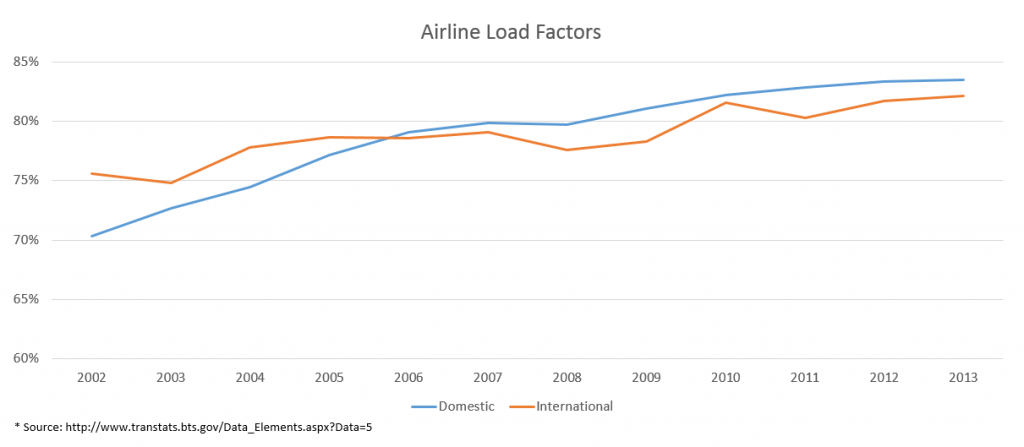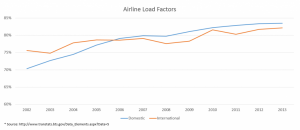tmount
Administrator

I happened to see a tweet on a (for me) busy Friday afternoon that struck me.
The Fadeout of the Mileage Run http://t.co/C3eV5bEHqX
— George (@FlyerTalkerinA2) September 12, 2014
George tweeted it, but its actually to a New York Times article by Josh Barro. The cliff notes for the article are this – Mileage Runs don’t make sense for many, Mileage Runners do so for status or redeemable mileage, Mileage Runners are not profitable for airlines, airlines have instituted revenue based programs specifically for that, and American is the last bastion for Mileage Runners. Ok, that probably over simplifies the article, but, let me expand.
Now I’ll be the first to admit, I don’t read the New York Times regularly, nor do I know who Josh Barro is, but, reading through the article, I question one core assertion (I could probably go further, but I feel strongest about this one).
But mileage running has never made much economic sense for the airlines.
I’m not sure this is true. Maybe I’m going too far back, but referencing Thomas Petzinger, Jr’s Hard Landing, to paraphrase: the First Rule of Airline Economics: Once the flight is paid for, any additional payload is pure gravy. Now, granted, right now with load factors so high, those last fares are higher, which Barro correctly notes (referencing Gary Leff), that mileage run fares are not as low as they used to be. Accepting that, I would submit to you, that while this may be true, industries, like economies are cyclical, with highs and lows. 10+ years ago, airlines were really looking for that “pure gravy,” and logically, this could, and likely will happen again.
A word about Load Factors
Load factors, at the very basic level, are how full planes are. US Airlines have spent the past few years reducing capacity, working toward more efficient aircraft, and in general, attempting to “right-size” capacity to increase load factors. Now, I’m not an expert is load factors (or really anything, but that’s beside the point), but I did reach out to some experts, as well as pull some numbers from the US Department of Transportations’ Bureau of Transportation Statistics (BTS).
First, the experts – which I reached out to via Twitter. @AirlineFlyer and @WanderngAramean
And 80% is prob better. RT @tmount: Question @AirlineFlyer and other #avgeeks – What is the ideal (realistic) load factor for a US Airline?
— Seth Miller (@WanderngAramean) September 13, 2014
and
@tmount Key is to be high enough to make $$ but still have flexibility with ops, irregular or otherwise. @AirlineFlyer #AvGeek
— Seth Miller (@WanderngAramean) September 13, 2014
Given that, plus some other datapoints, Seth went on to note that Jetblue was doing 88% last month, but its not clear if that is sustainable, especially incorporating irregular operations (IRROPS).
Now for the data from BTS:

Airline Load Factors 2002-2013, courtesy of the Department of Transportation, Bureau of Transportation Statistics.
I would submit to you, based on that blue line, that domestic airlines are encountering resistance at or about 83%.
What I’m getting at
Ok – so we see that Airlines are starting to meet a resistance point around 83%, and we see airlines are adding aircraft, in some cases, going for “right-sized” aircraft, Wandering Aramean calls this Airlines getting better at controlling capacity. I say “right-sized” because not a single US Airline has bought the A380, but many are buying the 787, the 777, and in the smaller arena, the newer 737s, and even regionals are getting a bit of an upgrade with CR700’s and CR900’s.
That said, I would argue that if we see another downturn (and I’m just trying to be pragmatic here), it is entirely possible that we will see promotions that will be oriented toward mileage runners. Yes, American is the last bastion of mileage running now, with Delta, United, and Southwest moving toward revenue-based frequent flier programs, with Delta being the worse with respect to revenue based redeemable mileage earning, but, things could change.
So my point is, mileage running has worked in the past, and for some it continues to work. I believe that mileage running will continue, albeit at slightly higher cost per mile (cpm).
What do you think? Is Mileage Running dead?
Continue reading...
